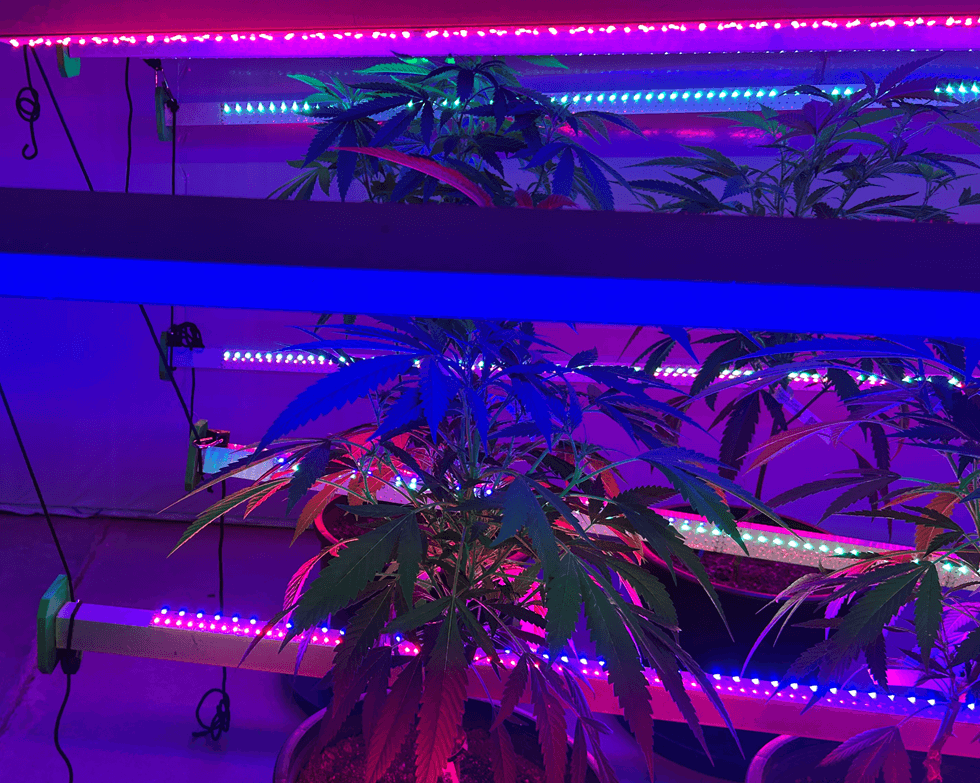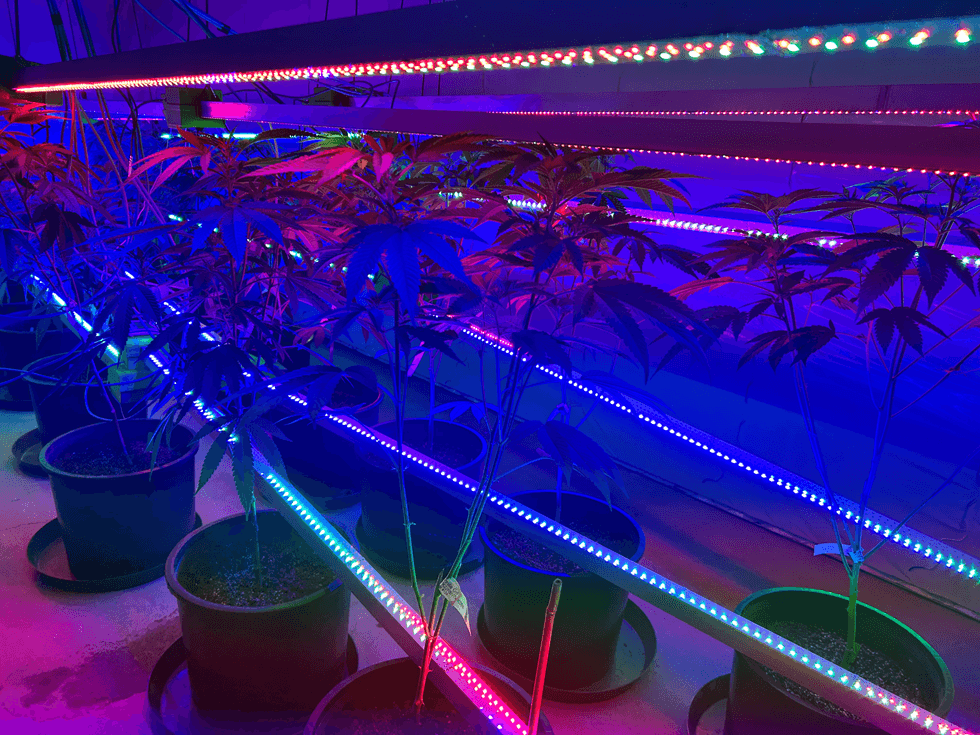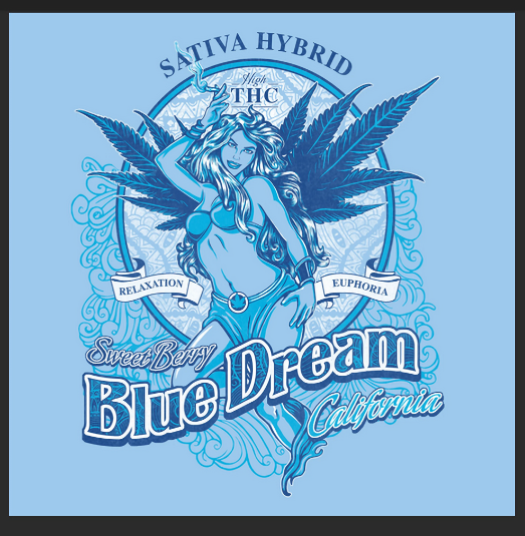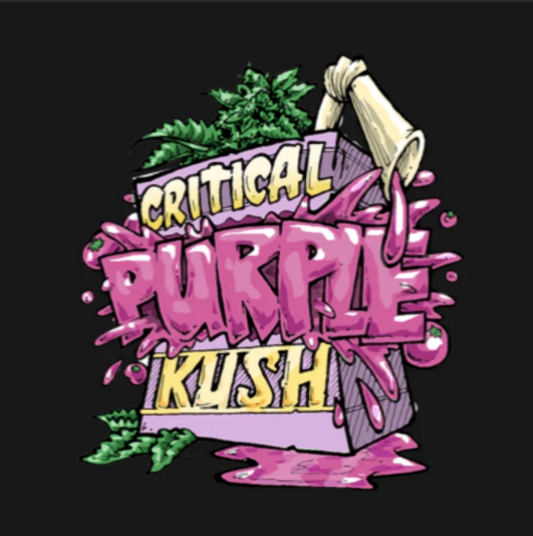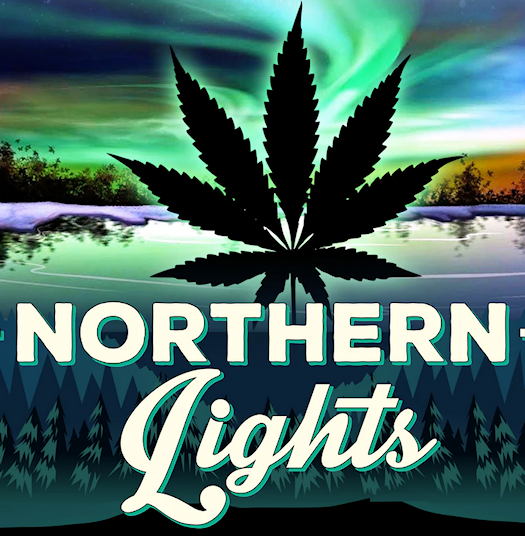Stage Specific Light Recipes
Stage-specific light recipes are customized lighting plans that adjust spectrum, intensity, photoperiod, and distribution throughout the cannabis growth cycle. Much like a chef’s recipe, these lighting strategies change with each stage—seedling, vegetative, and flowering—to guide plant development, maximize efficiency, and improve yield. By tailoring light to plant needs, growers achieve stronger structure, higher potency, and more consistent results. Dynamic, programmable fixtures make these recipes repeatable, turning lighting into a precision growth tool rather than a fixed input.What Are Light Recipes?
In modern cannabis cultivation, lighting is no longer one-size-fits-all. Just as a chef follows a recipe to bring out the best flavors in a dish, growers now use light recipes—precise plans for adjusting spectrum, intensity, timing, and distribution throughout the plant’s life cycle.
A light recipe defines not just how much light a plant receives, but what kind of light and when. By tailoring these variables, growers can shape everything from plant structure to flowering speed, potency, and terpene expression. For example, more blue light in the vegetative stage helps maintain compact growth and tighter internodes, while red and deep-red wavelengths in flower drive calyx expansion and heavier bud production. Far-red subtly influences flowering signals, while green improves canopy penetration and visibility for growers working in the room.
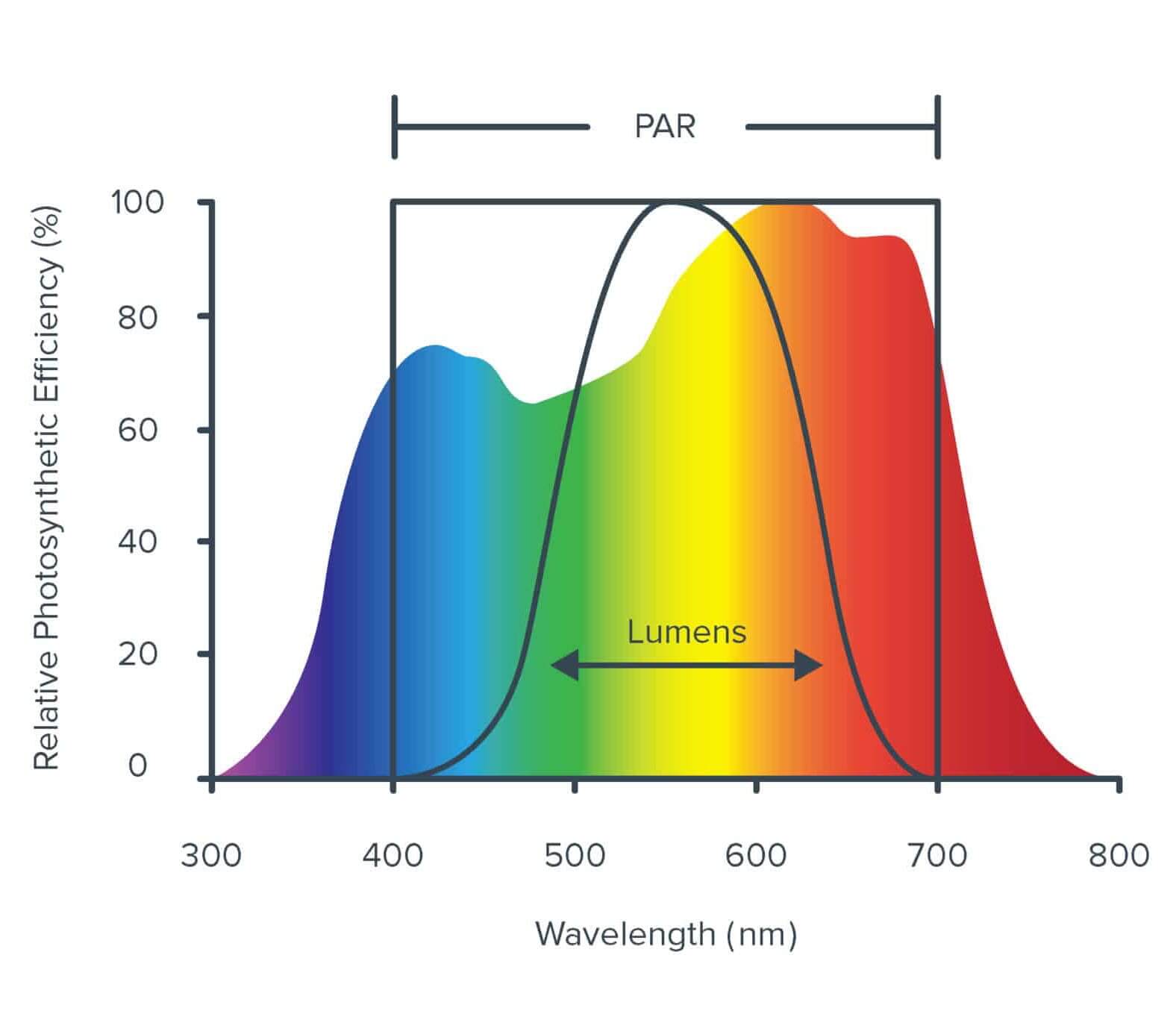
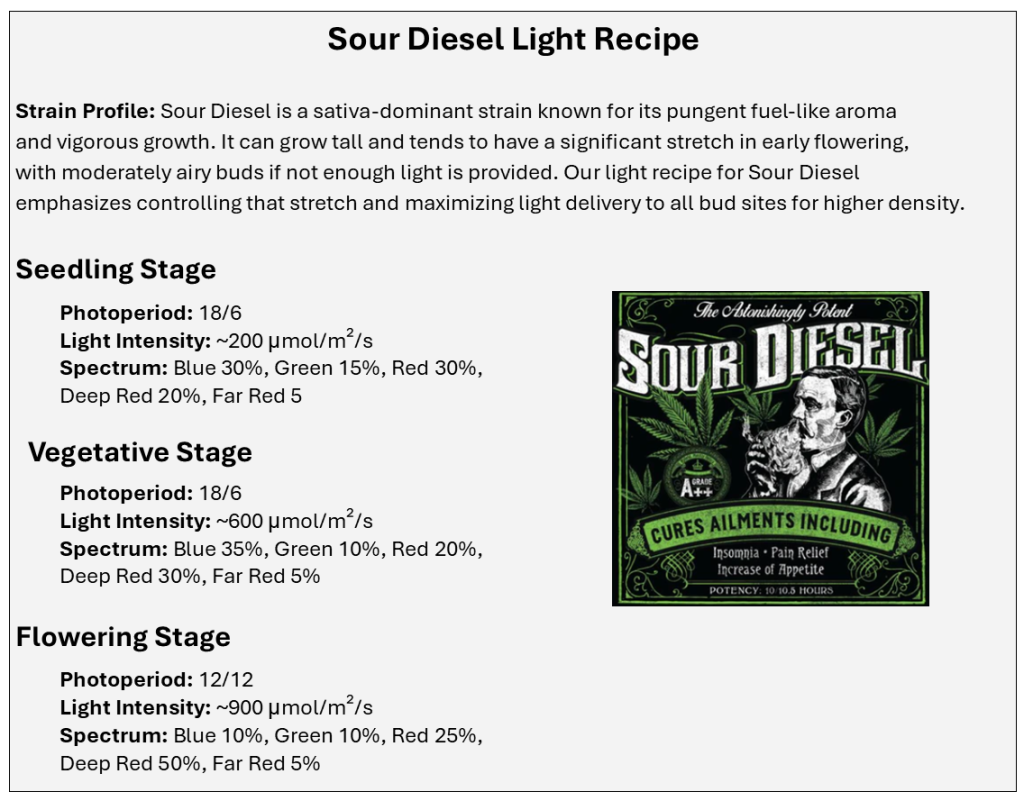
Light recipes also account for intensity (measured in PPFD), photoperiod (the hours of light and dark per day), and distribution (ensuring every leaf and bud site gets equal access to photons). Together, these parameters give growers a toolkit to fine-tune outcomes across different cultivars and environmental conditions.
The goal isn’t a universal “perfect recipe.” Cannabis strains vary widely, and so do grow environments. Instead, recipes provide a structured baseline that growers can test, track, and refine. With programmable, cool-running LEDs like LumaG’s PoE system, light recipes are not only possible but repeatable—turning lighting from a static input into a controllable lever for yield and quality.
Top 5 Benefits of Light Recipes
-
Optimized Growth
Matching Light to Plant Needs
Stage-specific recipes provide the right spectrum and intensity for each phase of cannabis growth. Seedlings receive gentle light for rooting, veg plants get blue-rich light for compact structure, and flowering plants thrive with red and deep-red for heavy bud development and consistent yields
-
Improved Plant Morphology
Stronger, Bushier Growth
By adjusting recipes at each stage, growers encourage compact internodes, stronger stems, and fuller branching. This controlled growth prevents leggy stretching, creates balanced canopies, and prepares plants to support dense flowers, ensuring both structural stability and higher overall productivity.
-
Enhanced Potency
Unlocking Plant Chemistry
Dynamic recipes fine-tune resin production by increasing cannabinoids and preserving terpenes. Spectrum shifts in flowering—especially red, deep-red, and far-red—stimulate trichome development while protecting delicate aromatics, resulting in cannabis with richer flavor, stronger aroma, and higher potency.
-
Greater Energy Efficiency
Using Light More Intelligently
Stage-specific recipes match intensity and duration to what plants can actually use. This precision reduces wasted photons, minimizes HVAC loads, and lowers energy costs per gram. By tailoring light to demand, growers produce more with less, maximizing both sustainability and profitability.
-
Consistency & Repeatability
Every Bud Site Counts
Light recipes transform lighting into a programmable, repeatable tool. With consistent stage-specific profiles, growers achieve uniform results across harvests, reducing variability in plant structure, yield, and quality. Reliable outcomes make scaling operations easier and help meet consumer expectations batch after batch.
Why Grow Cannabis with Light Recipes?

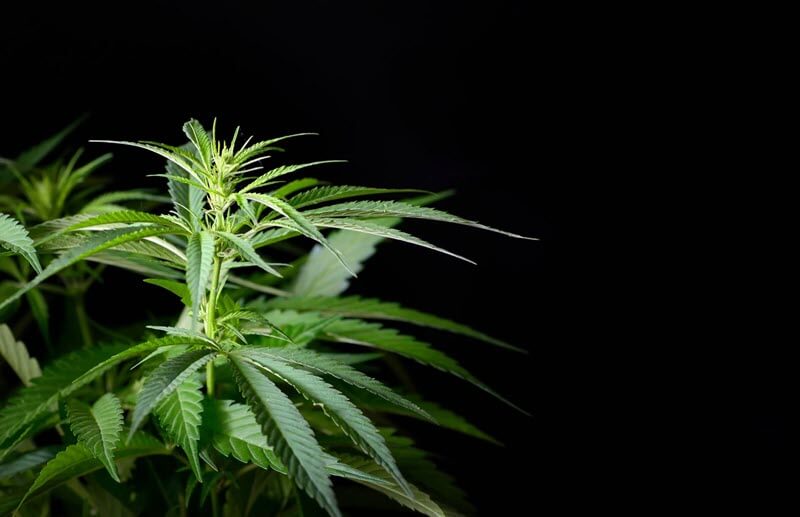
Cannabis is one of the most light-sensitive crops in controlled environment agriculture. Subtle changes in spectrum, intensity, or timing can dramatically influence how plants grow, flower, and ultimately express potency and flavor. That’s why modern growers are turning to light recipes—structured, stage-specific approaches to lighting that move beyond guesswork.
Learning to grow with light recipes offers several advantages. First, it provides predictability. Instead of trial-and-error lighting setups, growers use recipes that define PPFD levels, photoperiods, and spectral balance tailored to each growth stage. This reduces variability between harvests and leads to more consistent yields.
Second, light recipes enable optimization. Blue-rich spectrums during vegetative growth keep plants compact with strong branching, while red and deep-red during flowering maximize biomass and calyx development. Far-red helps trigger flowering responses, and green improves penetration into dense canopies. Each wavelength has a role, and recipes bring them together in a coordinated way.
Third, light recipes maximize resource efficiency. By matching light intensity and duration to plant needs, energy use becomes more purposeful. This reduces wasted photons, lowers HVAC demands, and ultimately cuts electricity costs per gram produced.
Finally, growers who master light recipes gain quality control. With stable lighting inputs, resin production, cannabinoid concentration, and terpene expression become more reliable. The result: buds that consistently meet consumer expectations for potency, aroma, and flavor.
In short, learning light recipes transforms lighting from a sunk cost into a precision tool—driving both profitability and plant performance.
Light Recipes for Faster Time-to-Harvest
In today’s competitive cannabis market, faster time-to-harvest is a powerful advantage. Each day shaved off the grow cycle translates into more turns per year, higher revenues, and faster return on investment. With LumaG’s programmable PoE lighting and strain-specific light recipes, growers can push plants to maturity more efficiently—without compromising quality.
Unlike static “full spectrum” LEDs that deliver the same spectrum throughout the grow, LumaG fixtures offer precise spectral control at each growth stage. This means growers can match light output to plant biology—triggering developmental milestones like internode spacing, canopy expansion, and flowering initiation exactly when needed. The result? Plants progress faster through each phase, and harvest comes sooner.
For example, blue-heavy recipes during veg encourage compact, branchy growth with tight internodes—ideal for building structure quickly. Once in flower, recipes shift to deep red and far-red, triggering earlier bud initiation and promoting faster calyx swelling. These spectrum shifts are not guesswork—they’re grounded in plant science and programmable by the grower.
Every strain reacts differently. Some, like Sour Diesel, tend to stretch aggressively and produce airy buds. A customized recipe can reduce that stretch and accelerate bud development. Others, like Tangie, benefit from enhanced terpene expression under adjusted spectra. LumaG’s dynamic tunability lets cultivators optimize per cultivar, dialing in faster, more productive outcomes.
Combined with cooler-running fixtures and simplified infrastructure via Power over Ethernet (PoE), LumaG delivers both the speed and control modern grower’s demand. Instead of waiting weeks for a lagging canopy to catch up, cultivators can guide each plant through a faster, more efficient growth cycle—harvesting earlier, more often, and with consistent results.
Time is money. LumaG makes everyday count.
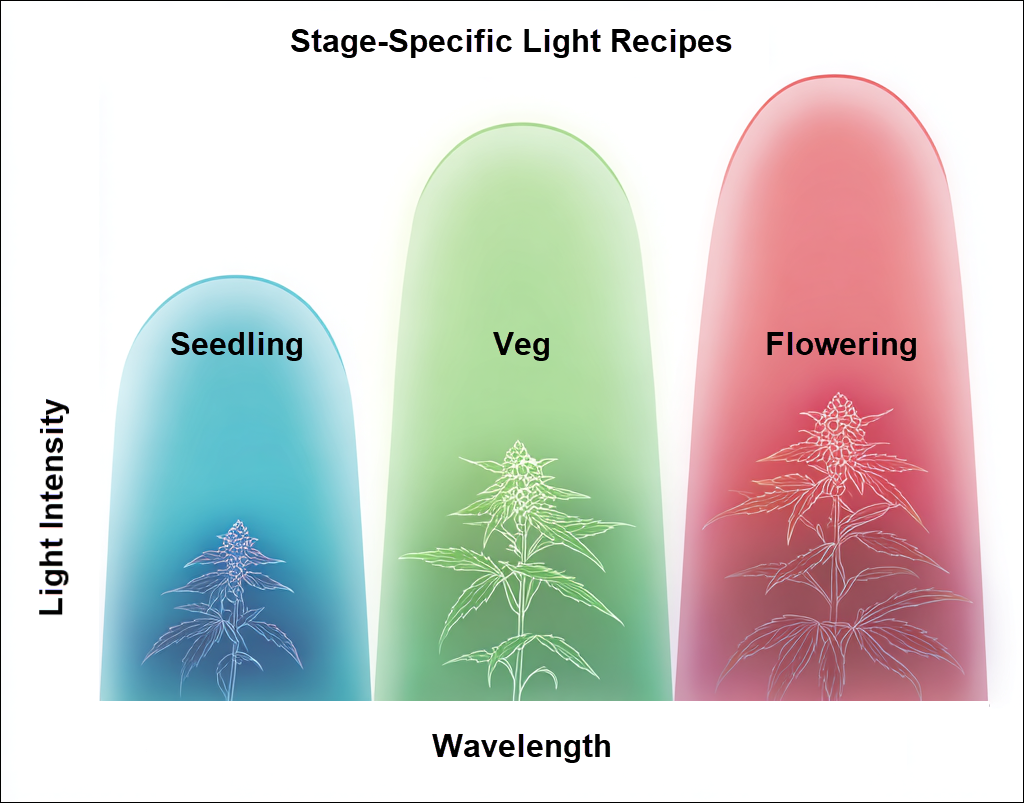

Light Recipes vs. Full Spectrum Why Dynamic Control Wins
In cannabis cultivation, not all lighting is created equal. Many growers start with fixed “full spectrum” fixtures that aim to mimic natural sunlight. While these lights can support growth from seed to harvest, they lack the flexibility needed to fine-tune outcomes. That’s where light recipes—using dynamic, tunable spectra—come in.
A light recipe allows you to adjust spectrum, intensity, and timing for each growth stage. For example, seedlings benefit from more blue light to stay compact, while vegetative plants need a balance of blue and red for branching and biomass. During flowering, red and deep-red wavelengths drive calyx swell, while a touch of far-red encourages uniform bud initiation. By shifting the spectrum stage by stage, growers optimize morphology, efficiency, and final quality.
